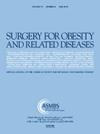National trends in using revisional surgeries post-sleeve gastrectomy due to reflux and weight recurrence: a matched case-control analysis
IF 3.5
3区 医学
Q1 SURGERY
引用次数: 0
Abstract
Background
Several options exist for surgical conversion after sleeve gastrectomy (SG), but a definitive safety profile for each option by indication for conversion remains unclear.
Objectives
To determine and compare 30-day risk profiles of SG conversion to Roux-en-Y gastric bypass (RYGB), biliopancreatic diversion with duodenal switch (BPD-DS), and single-anastomosis duodenoileostomy (SADI).
Methods
Metabolic and Bariatric Surgery Accreditation and Quality Improvement Program national database entries from 2020 to 2022 were used to identify 25,760 adult patients who underwent SG conversion to RYGB, BPD-DS, or SADI. Subgroup analyses were performed among 6106 conversions completed for weight-related complications (RYGB: 3053 patients; BPD-DS: 1826 patients; SADI: 1227 patients). Multivariable analysis and 1:1 nearest-neighbor matching were used to further characterize the 30-day risk profile of each conversion.
Results
Patients with RYGB conversions had a lower preoperative body mass index compared with those with BPD-DS + SADI conversions (39.8 versus 46.1, P < .001) and significantly lower rates of medical comorbidities. The distribution of conversion indication for each MBS configuration varied, where most RYGB conversions were for reflux (56.1%) whereas most BPD-DS + SADI conversions were for weight-related complications (87.3%; P < .001). On 1:1 matched analysis of conversions for weight recurrence, odds of 30-day complications (odds ratio .73, P = .019) and readmission (odds ratio .77, P = .031) were lower in BPD-DS + SADI conversions compared with RYGB. There were no significant differences in odds of 30-day reintervention or reoperation between conversion to RYGB and BPD-DS + SADI. Major differing drivers of complications between conversion types included hemorrhage (RYGB 1.98% versus BPD-DS + SADI .87%; P = .001).
Conclusions
For weight recurrence after SG, conversion to BPD-DS + SADI does not have greater 30-day complications than RYGB and may be a safe conversion option.
袖带胃切除术后因反流和体重复发而使用翻修手术的全国趋势:匹配病例对照分析。
背景:袖带胃切除术(SG)后有几种手术转流方案,但根据转流适应症确定每种方案的安全性仍不明确:目的:确定并比较袖带胃切除术后转为Roux-en-Y胃旁路术(RYGB)、胆胰转流十二指肠手术(BPD-DS)和单吻合十二指肠造口术(SADI)的30天风险概况:利用代谢与减肥手术认证和质量改进计划 2020 年至 2022 年的国家数据库条目,确定了 25760 名接受 SG 转换为 RYGB、BPD-DS 或 SADI 的成年患者。在 6106 名因体重相关并发症而完成转换的患者中进行了分组分析(RYGB:3053 名患者;BPD-DS:1826 名患者;SADI:1227 名患者)。采用多变量分析和1:1近邻匹配来进一步确定每种转归的30天风险特征:结果:与 BPD-DS + SADI 转换患者相比,RYGB 转换患者的术前体重指数较低(39.8 对 46.1,P < .001),合并症发生率明显较低。每种 MBS 配置的转换适应症分布各不相同,其中大多数 RYGB 转换适应症是由于反流(56.1%),而大多数 BPD-DS + SADI 转换适应症是由于体重相关并发症(87.3%;P < .001)。对因体重复发而转为 BPD-DS + SADI 的患者进行 1:1 匹配分析后发现,与 RYGB 相比,BPD-DS + SADI 患者的 30 天并发症几率(几率比 0.73,P = 0.019)和再入院几率(几率比 0.77,P = 0.031)更低。转为 RYGB 和 BPD-DS + SADI 的患者 30 天内再次干预或再次手术的几率没有明显差异。不同转换类型并发症的主要驱动因素包括出血(RYGB为1.98%,BPD-DS + SADI为0.87%;P = .001):结论:对于 SG 后体重复发的患者,转用 BPD-DS + SADI 的 30 天并发症并不比 RYGB 多,可能是一种安全的转用选择。
本文章由计算机程序翻译,如有差异,请以英文原文为准。
求助全文
约1分钟内获得全文
求助全文
来源期刊
CiteScore
6.70
自引率
12.90%
发文量
570
审稿时长
56 days
期刊介绍:
Surgery for Obesity and Related Diseases (SOARD), The Official Journal of the American Society for Metabolic and Bariatric Surgery (ASMBS) and the Brazilian Society for Bariatric Surgery, is an international journal devoted to the publication of peer-reviewed manuscripts of the highest quality with objective data regarding techniques for the treatment of severe obesity. Articles document the effects of surgically induced weight loss on obesity physiological, psychiatric and social co-morbidities.

 求助内容:
求助内容: 应助结果提醒方式:
应助结果提醒方式:


